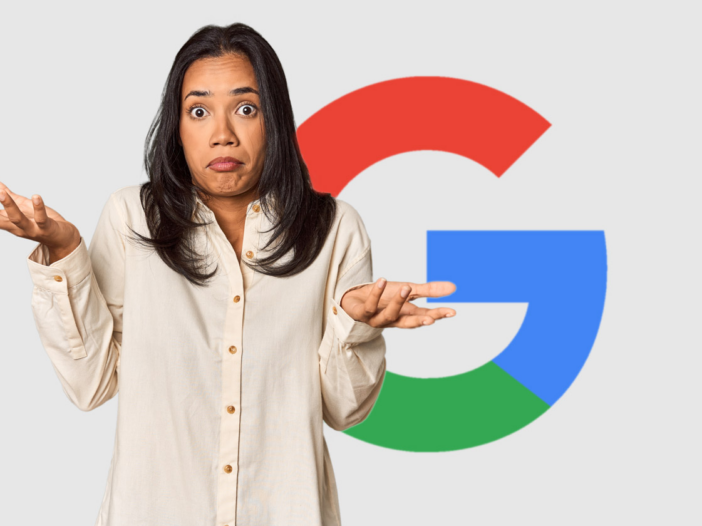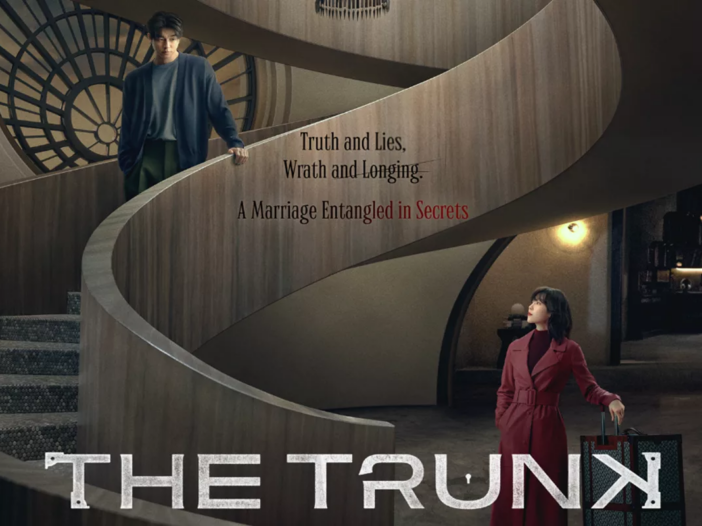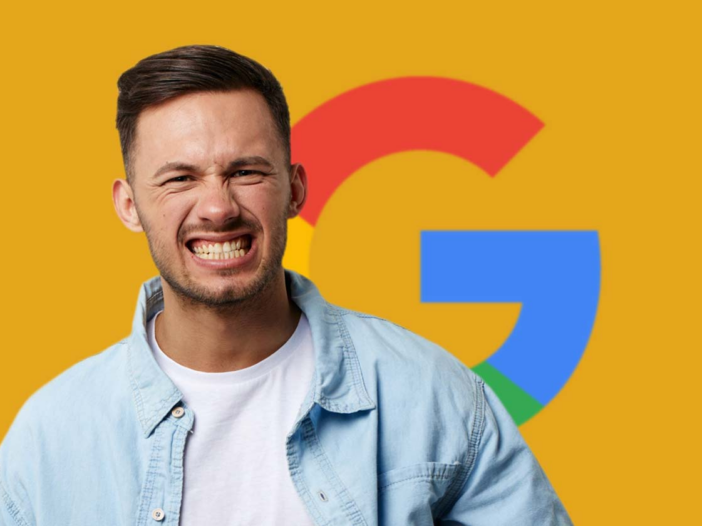Join this leadership discussion for proven techniques to build long-term relationships and keep your clients coming back.
Discover the latest trends, tips, and strategies in SEO and PPC marketing. Our curated articles offer in-depth analysis, practical advice, and actionable insights to elevate your digital marketing efforts.
In this guide, industry experts explore the challenges and opportunities presented by the onslaught of AI tools, and provide actionable tips for thriving amid these shifts.
Discover the latest trends, tips, and strategies in SEO and PPC marketing. Our curated articles offer in-depth analysis, practical advice, and actionable insights to elevate your digital marketing efforts.
Join three of Reddit’s top executives in this exclusive AMA (Ask Me Anything) to discover how you can tap into Reddit’s unique platform to drive brand growth.
Join this leadership discussion for proven techniques to build long-term relationships and keep your clients coming back.
Google podcast explains how Core Web Vitals is a ranking factor that paradoxically doesn’t improve search results
Google’s Search Off the Record podcast covered the topic of Core Web Vitals (CWV), noting that while it’s a ranking factor it’s not so important that improving it will improve search visibility. The podcast explains how to reconcile how CWV can be a ranking factor while at the same not something that will noticeably help rankings.
Rick Viscomi (engineer and Web Performance Lead at Google) and Lizzi Sassman (Senior Technical Writer at Google) downplayed getting poor Core Web Vitals scores, emphasizing what really matters is how actual users are experiencing the website in terms of site performance in the real world.
Lizzi Sassman said that she tested the Core Web Vitals scores for Google’s Page Experience documentation and got different scores. She shared that Google’s own documentation on Page Experience only scored 45 (on a scale of 1 – 100).
Rick Viscomi answered that actual website performance of users browsing the website matters more than the scores.
He explained:
“… I think this is such a common cause of confusion because developers see one single number and it’s red.
It’s scary. Do I need to panic?
I get this question all the time and I say ‘What really matters is what your real users are experiencing.’”
Most in the search community have gotten the memo about not worrying about CWV scores. They’re great for benchmarking performance in terms of optimizing for sales, ad clicks and conversions, which is where a good user experience literally pays off.
This next part sounds contradictory but it makes more sense when it’s read in context. John Mueller asserts that CWV is used in the ranking systems. But in the next breath he says that incremental improvements CWV scores will not be noticeable in search results.
The context is that Mueller’s team spoke to the search team and discovered that CWV is used in the “ranking systems or in search systems” and that’s why it’s reflected in Google’s documentation.
“…we do say we do use this in our ranking systems or in Search systems.”
Then Mueller added that achieving perfect CWV scores won’t make a difference in the search results. He explained that what’s missing in that statement is that CWV as a ranking factor is one part of a bigger ranking engine and how it’s applied is not something that Google talks about.
He explained:
“I think a big issue is also that site owners sometimes over-fixate on the metrics themselves… And then they spend months of time kind of working on this. And they see this as they’re doing something for their Search rankings. And probably a lot of those incremental changes are not really visible in Search.”
And this is the part where says that the details of how CWV is used as a ranking factor is the part that’s withheld from SEOs and publishers.
“The details we tend not to go into. We don’t go into thresholds or anything like that. Similar to how we don’t talk about how many words on a page you have to have or all of those details, which, from my point of view, are almost secondary.”
So the takeaway is not that CWV is a ranking factor. The takeaway is that it’s good to improve CWV but a perfect CWV won’t be rewarded with better rankings.
This next part is interesting because they again emphasize the importance of speed in the wider and more general sense (the forest) and then zoom in to the more narrow sense of ranking where they talk about factors that actually make a difference.
Rick Viscomi explains how web performance is important in the broader overall sense:
“It’s really good for everybody and the rising tide lifts all boats. Check your website. Make it faster. Eat your vegetables.”
Then Lizzi Harvey advises that a better use of time is to focus on content quality, which is the narrow focus on improving rankings.
She commented:
“Yeah focusing on that and then still having like a terrible article like the words on the page are not good or the design is not good and you made it really fast. Okay. Is that really going to make an improvement for your users or for search?”
I don’t think that Search Off the Record had planned to talk about CWV as a broader general concern and content as a more specific ranking-focused factor. But that’s how the podcast naturally turned out and it makes sense to conceptualize Core Web Vitals as a general big picture factor because it helps reconcile how something can be a ranking factor that on its own doesn’t really make a difference in the search results.
Listen to the podcast from the 19 minute mark:
Featured Image by Shutterstock/Asier Romero
I have 25 years hands-on experience in SEO, evolving along with the search engines by keeping up with the latest …
Conquer your day with daily search marketing news.
Join Our Newsletter.
Get your daily dose of search know-how.
In a world ruled by algorithms, SEJ brings timely, relevant information for SEOs, marketers, and entrepreneurs to optimize and grow their businesses — and careers.
Copyright © 2024 Search Engine Journal. All rights reserved. Published by Alpha Brand Media.
‘The Trunk’: Gong Yoo and Seo Hyun Jin enter into a mysterious contract marriage – The Statesman
Netflix has finally dropped the poster and the teaser of the highly anticipated drama ‘The Trunk’ led by Gong Yoo and Seo Hyun Jin!
Statesman Web | October 30, 2024 11:54 pm
Source: Instagram
Netflix has finally dropped the poster and the teaser of the highly anticipated drama ‘The Trunk.’ The drama is a mysterious thriller about a contract marriage between two people. It is led by the renowned star Gong Yoo of ‘Goblin’ and ‘The Beauty Inside’ star Seo Hyun Jin. The upcoming drama is based on Kim Ryeo Ryeong’s eponymous novel with ‘Our Blues’ director Kim Gyu Tae at the helm. Heightening expectations and curiosities, the poster and the teaser feature a cold and eerie atmosphere.
‘The Trunk’ chronicles the life of Noh In Ji (Seo Hyun Jin), an employee of NM (New Marriage). Her company arranges short-term marriage contracts for their clients. Hyun Jin’s job is to live with a ‘contract husband’ every year. She has a cold and distant demeanour. Soon, her life takes a pivotal turn when Han Jeong Won (Gong Yoo) enters into a contract marriage with her in order to save his previous marriage.
The poster features Seo Hyun Jin getting ready to leave a majestic house with a huge trunk in her hand. On the other hand, Gong Yoon stands on the spiralling staircase and the duo look at each other. The tension between the stars is palpable and fans are eager to see their chemistry on screen. “Truth and lies, wrath and longing. A marriage entangled in secrets.” Meanwhile, the teaser presents a thrilling game where the lives of two individuals change as they enter into a loveless and temporary contract marriage.
Advertisement
A post shared by Netflix Korea | 넷플릭스 코리아 (@netflixkr)
The teaser opens with Seo Hyun Jin walking with a huge trunk as she enters a house. Meanwhile, Gong Yoo’s character poses a question to her in a voiceover-, “Do I refer to you as my wife? Is that how this works?” Responding to this, she asks him to refer to the manual. The duo then partakes in their one-year contract marriage following the manual. Both of them are surrounded by a tense and chilly air, raising anticipations. The narrative intensifies when Jeong Won’s ex-wife, Lee Seo Yeon (Jung Yun Ha) congratulates him on his new marriage. However, she tells Hyun Jin, “Please be happy. I may be punishing Jeong Won, but I’m also giving him time off.”
Also Read: Yoo Yeon Seok and Chae Soo Bin play a distant couple in ‘When The Phone Rings’
Releasing on November 29, fans have high expectations from the drama given the ace cast and a stellar team behind the camera.
Advertisement
Advertisement
PEOPLE’S PARLIAMENT, ALWAYS IN SESSION
Address
The Statesman Net Private Limited
Statesman House, First Floor 148 Barakhamba Road
New Delhi – 110001
(+91) (011) 41605781, 41605958
© 2023, thestatesman.com | All rights reserved
Disctopia And Semrush Launch Podcast Hosting App To Optimize Podcasts – Search Engine Journal
Join this leadership discussion for proven techniques to build long-term relationships and keep your clients coming back.
Discover the latest trends, tips, and strategies in SEO and PPC marketing. Our curated articles offer in-depth analysis, practical advice, and actionable insights to elevate your digital marketing efforts.
In this guide, industry experts explore the challenges and opportunities presented by the onslaught of AI tools, and provide actionable tips for thriving amid these shifts.
Discover the latest trends, tips, and strategies in SEO and PPC marketing. Our curated articles offer in-depth analysis, practical advice, and actionable insights to elevate your digital marketing efforts.
Join three of Reddit’s top executives in this exclusive AMA (Ask Me Anything) to discover how you can tap into Reddit’s unique platform to drive brand growth.
Join this leadership discussion for proven techniques to build long-term relationships and keep your clients coming back.
Podcast hosting platform Disctopia has announced a partnership with Semrush. Greg spoke to Disctopia CEO Patrick Hill about what this means.
Disctopia, a podcast hosting platform for independent creators, announced a partnership with Semrush to optimize podcast episodes with its Podcast Hosting App.
This new SEO feature enables keyword extraction from audio transcriptions directly from the Semrush platform.
This allows indie creators and their SEO pros to align their podcast keywords directly to keyword campaigns in Semrush, enabling this content to rank higher in search engine results pages (SERPs).
According to a recent Jacobs Media survey, 33% of respondents listened to podcasts at least once a week in 2023 – up from 21% in 2019, which is a growth of 12% over the past 4 years.
This makes podcasting a growing part of many marketing strategies.
According to a BrightEdge study, 53% of website traffic comes from organic searches. This makes SEO an essential part of any marketing strategy, including audio content.
As podcasts continue to be an effective marketing tool, this alliance bringing SEO into the mix will help take the audio format to the next level for content creators and marketers.
Disctopia’s TruePlay AI automated audio transcription services allow podcasters to edit their text for accuracy to improve their episodes’ accessibility.
The platform’s new Semrush SEO feature can analyze podcast transcriptions and extract keywords from the text, so creators can implement them in their SEO campaigns directly in Semrush.
This should help to make their audio content more useful and satisfying.
The tool also identifies relevant keywords from the transcript, such as recurring themes or topics that are frequently mentioned in the episode.
This helps creators gain insights into the episode’s content and better understand their audience’s interests. Ultimately, this new feature increases a podcast’s online discoverability and attracts more listeners.
The Podcast App will be a part of Semrush’s App Center, which showcases some of the best marketing tools for the SEO platform’s thousands of users.
Users get direct access to all the podcast hosting features within the App Center without leaving the Semrush interface for a more seamless experience.
Disctopia and Semrush hope that this integration will allow both experienced and new podcast hosts to make their content more visible, broaden their audience, and increase their chances of success.
Patrick Hill, Founder and CEO of Disctopia, said,
“By incorporating Semrush’s robust tool into our podcast transcription feature, we are able to simplify the process of optimizing SEO. This integration allows for all the essential tools needed for successful optimization to be conveniently located in one central location.”
Hill added,
“This integration aligns with our mission to provide independent podcasters with the necessary tools to grow their listenership. The Podcast Hosting app, developed by Disctopia, is a valuable addition to Semrush’s platform.”
Hill concluded,
“If you’re looking for a comprehensive solution to take your podcast to the next level, look no further than Semrush. This powerful tool offers everything you need to host your podcast, transcribe your episodes, and optimize your content for maximum impact.
With its advanced SEO features, you can be sure your podcast will reach the right audience and help you achieve your marketing goals with ease.
Whether you’re a seasoned podcaster or just starting out, Semrush is the ideal solution for anyone looking to take their content marketing game to the next level.”
I asked Hill a couple of follow-up questions.
Here’s what I (GJ) asked, and he (PH) said:
Greg Jarboe: I realize that it’s still early days, but have you seen any improvement in your organic search rankings in Google?
Patrick Hill: “This partnership was set up to help podcasters increase their online searchability to align their podcast keywords directly to the keyword campaigns in Semrush. By putting keywords from your podcast and matching them with your website, it increases your podcast and website visibility, along with engagement on your podcast as it appears when people search.”
GJ: “Are there any tips or best practices that you can share with other SEOs and marketers?”
PH: “As far as podcasting is concerned, the key tips are to definitely do keywords and transcriptions and match keywords to articles already on your website, this will achieve maximum results.”
I also asked Matt Bailey of SiteLogic Marketing, who has been providing SEO services for over 20 years and hosts the Endless Coffee Cup podcast, for his reaction to the Disctopia and Semrush announcement.
Bailey said,
“It’s helpful to get more tools in one place. As AI disrupts workflows, it adds multiple tools to develop increasing amounts and types of content. Having a central resource will enable better efficiency and opportunities.”
Bailey added,
“Accessibility has always been a critical component of SEO, so generating a transcript is a great start. Even better, utilize mark-up to give the page a content hierarchy. Then, use these amazing AI tools to help you repurpose your podcasts into valuable articles that answers searcher’s questions.”
Featured Image: Christian Horz/Shutterstock
Greg Jarboe is president of SEO-PR, which he co-founded with Jamie O’Donnell in 2003. Their digital marketing agency has won …
Conquer your day with daily search marketing news.
Join Our Newsletter.
Get your daily dose of search know-how.
In a world ruled by algorithms, SEJ brings timely, relevant information for SEOs, marketers, and entrepreneurs to optimize and grow their businesses — and careers.
Copyright © 2024 Search Engine Journal. All rights reserved. Published by Alpha Brand Media.
Google Cautions: Exponential Content Growth Causes Re-Evaluation – Search Engine Journal
Join this leadership discussion for proven techniques to build long-term relationships and keep your clients coming back.
Discover the latest trends, tips, and strategies in SEO and PPC marketing. Our curated articles offer in-depth analysis, practical advice, and actionable insights to elevate your digital marketing efforts.
In this guide, industry experts explore the challenges and opportunities presented by the onslaught of AI tools, and provide actionable tips for thriving amid these shifts.
Discover the latest trends, tips, and strategies in SEO and PPC marketing. Our curated articles offer in-depth analysis, practical advice, and actionable insights to elevate your digital marketing efforts.
Join three of Reddit’s top executives in this exclusive AMA (Ask Me Anything) to discover how you can tap into Reddit’s unique platform to drive brand growth.
Join this leadership discussion for proven techniques to build long-term relationships and keep your clients coming back.
Google’s John Mueller says that an exponential growth in content will cause it to be seen as a new site and be re-evaluated
Google’s John Mueller answered a question about the impact of increasing a website’s size by ten times its original size. Mueller’s answer should give pause to anyone considering making their site dramatically larger, as it will cause Google to see it as a brand new website and trigger a re-evaluation.
One of the reasons for a site migration is joining two websites into one website, which can cause a site to become even larger. Another reason for an increase in size is the addition of a massive amount of new products.
This is the question that was asked in the SEO Office Hours podcast:
“What’s the impact of a huge expansion of our product portfolio on SEO Performance, for example going from 10,000 to products to 100,000?”
It must be pointed out that the question is about a site growing ten times larger.
This is is Mueller’s answer:
“I don’t think you have to look for exotic explanations. If you grow a website significantly, in this case, by a factor of 10, then your website will overall be very different. By definition, the old website would only be 10% of the new website. This means it’s only logical to expect search engines to re-evaluate how they show your website. It’s basically a new website after all.
It’s good to be strategic about changes like this, I wouldn’t look at it as being primarily an SEO problem.”
Re-Evaluate How Google Shows A Website
Mueller said it’s not primarily an SEO problem but it’s possible most SEOs would disagree because anything that affects how a search engine shows a site is an SEO problem. Maybe Mueller meant that it should be seen as a strategic problem?
Regardless, John Mueller’s answer means that growing a site exponentially in a short amount of time could cause Google to re-evaluate a site because it’s essentially an an entirely new website, which might be an undesirable scenario.
Although Mueller didn’t specify how long a re-evaluation can take, he has indicated in the past that it can take months. Maybe things have changed but this is what he said four years ago about how long a sitewide evaluation takes:
“It takes a lot of time for us to understand how a website fits in with regards to the rest of the Internet.
…And that’s something that can easily take, I don’t know, a couple of months, a half a year, sometimes even longer than a half a year, for us to recognize significant changes in the site’s overall quality.”
The implication of a sitewide evaluation triggered by an exponential growth in content is that the optimized way to approach content growth is to do it in phases. It’s something to consider.
Featured Image by Shutterstock/ShotPrime Studio
I have 25 years hands-on experience in SEO, evolving along with the search engines by keeping up with the latest …
Conquer your day with daily search marketing news.
Join Our Newsletter.
Get your daily dose of search know-how.
In a world ruled by algorithms, SEJ brings timely, relevant information for SEOs, marketers, and entrepreneurs to optimize and grow their businesses — and careers.
Copyright © 2024 Search Engine Journal. All rights reserved. Published by Alpha Brand Media.
How to Optimize Your Website for Voice Search – socPub
Voice search has transformed how users interact with technology and access information online. Today, asking Google Assistant, Siri or Alexa for movie streaming locations, news updates or cooking tips has become routine.
With the rise of AI-enhanced neuro-linguistic programming (NLP), the demand for automatic speech recognition capabilities has skyrocketed. Website owners must embrace this evolving trend to enhance their online presence and provide the seamless experiences users now expect. Here’s how to go about it in six steps.
Like traditional SEO practices, voice search optimization hinges on strategic keyword usage to attract valuable leads, though certain nuances exist.
Unlike conventional text-based searches, voice search queries are conversational and often longer, reflecting a more natural communication style. This dynamic requires incorporating long-tail keywords, typically comprising three to five words and crafted around a more specific search intent.
For example, a traditional keyword could be “Italian restaurant,” whereas a long-tail keyword might say “best Italian restaurant with outdoor seating in downtown Chicago.” The second one is more specific and closely aligns with how a user might conduct a voice search.
People speak differently than they type, so it’s important to account for word usage and phrasing differences. For instance, a user might type “French omelet recipe” into Google. For a voice search, they might say, “Hey Google, what’s the top French omelet recipe?”
A crucial aspect of this approach is crafting keywords around questions. Research shows that nearly 20% of voice searches are prompted by the same 25 keywords, including “how,” “what,” “is” and “do.” These words are the most common precursors to a question, and integrating them into keyword selection is crucial for effectively capturing voice search traffic.
FAQ content is perfect for voice search because it answers common questions directly. The key is to anticipate the types of questions the audience will ask based on the business’s offerings. For instance, a clothing store may include FAQs such as:
Answering these questions provides an excellent opportunity to include relevant keywords for enhanced voice search visibility.
An FAQ page also acts as a centralized information hub, streamlining user access to relevant details and improving the website’s chances of appearing in search results. This strategy enhances user engagement and boosts online visibility by offering valuable insights about the business.
About 46% of people who conduct voice searches seek information on local businesses. Queries like “Where can I buy?” and “Where is the nearest [business] to me?” are common, underscoring the need for websites to optimize local listings.
One crucial element is optimizing for the Local SEO 3-pack, a prominent feature showcasing three local businesses at the top of online search results. Google pulls relevant company details to fill this box based on “near me” search queries. Appearing in this highly visible position attracts more potential customers and increases the chances of voice SEO success.
Voice search accounts for 27% of Google queries on handheld devices like smartphones and tablets. This rate will likely increase in the coming years as the number of global mobile users increases.
Users will land on the mobile version of a site when they click on a voice-based search engine results page (SERP). The most essential considerations involve ensuring mobile-first indexing and optimizing site loading speed. This approach fosters positive user interaction, driving improved search rankings.
The schema markup represents a structured data format that feeds search engines supplementary details about website content. Utilizing this function improves the site’s chances of appearing higher in SERPs and critical features such as rich snippets and Local SEO 3-packs.
Various companies offer their own smart speakers in the market, each contributing a distinct experience to voice search and functioning. For example, Alexa features about 3,000 skill commands for controlling Amazon Echo devices, plus over 100,000 available entries from third-party developers.
Understanding how to optimize for specific devices is crucial, and it begins with knowing where the speaker gets its results. For instance, Alexa and Microsoft Cortana pull voice-search data from Bing, whereas Google Assistant and Siri get theirs from Google. That means website content must be optimized for both search engines to earn valuable conversions.
Given voice search optimization’s increasing complexity and competitiveness, getting expert help can be invaluable. Professional SEO services can take 4-6 months to deliver ROI, but the time and cost are worthwhile if the company is reputable.
These services provide access to cutting-edge tools and technologies that may not be readily available to in-house teams. Additionally, SEO specialists can conduct in-depth keyword research, competitor analysis and continuous monitoring of voice search trends to ensure the strategy remains relevant.
Advancements in AI and machine learning (ML) technologies actively shape the future of voice search.
These systems are smarter, expanding the scope of automated speech recognition to understanding word meanings in different situations. AI-driven tools with NLP functionality can decipher voice query context, intent and significance. As a result, marketers can publish more targeted content mirroring the conversational tone and natural language prevalent in voice searches.
AI can also analyze vast amounts of voice search data and derive insightful information by understanding patterns, trends and user behavior in previous queries. Over time, this can result in a more intuitive and personalized experience.
Recent research indicates over 162 million Americans will use voice assistants by 2027, an increase of 17.6 million from 2023. Gen Zers are at the forefront of this massive adoption, with 64% predicted to use a voice assistant monthly in 2027.
The adoption rate will likely increase further as Gen Alpha comes of age, eventually setting voice search as a critical standard in digital marketing. Advancements in speech recognition and analysis technologies will be key drivers in this transition.
Instead of typing in keywords, users can now simply speak their queries into voice-activated assistants. This shift in behavior will continue to significantly impact SEO practices as websites adapt to cater to this new way of searching. Businesses must rise to the challenge of adapting their online presence and communications.
News and Opinion for Techies, Builders, IT, and Innovators. socPub covers a number of topics including content management, software development and design, marketing strategy, information technology, social media, and technology.
Copyright © 2023, Dakota Imagery and contributors.
Google Insights: Can Incorrect Hreflang Tags Hurt SEO? – Search Engine Journal
Join this leadership discussion for proven techniques to build long-term relationships and keep your clients coming back.
Discover the latest trends, tips, and strategies in SEO and PPC marketing. Our curated articles offer in-depth analysis, practical advice, and actionable insights to elevate your digital marketing efforts.
In this guide, industry experts explore the challenges and opportunities presented by the onslaught of AI tools, and provide actionable tips for thriving amid these shifts.
Discover the latest trends, tips, and strategies in SEO and PPC marketing. Our curated articles offer in-depth analysis, practical advice, and actionable insights to elevate your digital marketing efforts.
Join three of Reddit’s top executives in this exclusive AMA (Ask Me Anything) to discover how you can tap into Reddit’s unique platform to drive brand growth.
Join this leadership discussion for proven techniques to build long-term relationships and keep your clients coming back.
Google’s Gary Illyes suggests incorrect hreflang tags may not hurt SEO, but the content language remains a key signal for search relevance.
In a recent episode of Google’s Search Off The Record podcast, Gary Illyes, a Google’s Search Relations team member, addressed concerns about incorrect hreflang implementation and its potential impact on SEO.
During the discussion, Illyes was asked about the consequences of mismatched hreflang annotations and actual page content.
Specifically, he addressed scenarios where a page might be incorrectly labeled as one language while containing content in another.
Illyes stated:
“As far as I remember, I worked on the parsing implementation plus the promotion implementation of hreflang, and back then, it didn’t cause problems.”
However, he also noted that his direct experience with this was from around 2016, adding the following:
“That’s a few years back… since then, we changed so many things that I would have to check whether it causes problems.”
Providing further context, Illyes explained Google’s approach to language and country relevance:
“When I spelled out LDCP, I said the language demotion country promotion. So, for example, if someone is searching in German and your page is in English, then you would get a negative demotion in the search results.”
This suggests that while incorrect hreflang implementation might not directly cause problems, the actual language of the content still plays a vital role in search relevance.
Interestingly, Illyes pointed out that there are exceptions to strict language matching:
“It’s less relevant to the query to the person unless you are searching for something like ‘how do you spell banana’… Because then it doesn’t really matter… well no it does… it still matters but… because you’re searching for something in English, so we would think okay you want some page that explains how to spell banana in English, not German.”
Understanding how Google handles hreflang and language mismatches can help inform international SEO strategies.
While Google’s systems appear to be somewhat forgiving of hreflang errors, the actual language of the content remains a key factor in search relevance.
Here are the top takeaways:
As Illyes noted, Google’s systems have changed over time. Continue to monitor official Google documentation and announcements for the most up-to-date best practices in international SEO.
Listen to the full podcast episode below:
Featured Image: Longfin Media/Shutterstock
Matt G. Southern, Senior News Writer, has been with Search Engine Journal since 2013. With a bachelor’s degree in communications, …
Conquer your day with daily search marketing news.
Join Our Newsletter.
Get your daily dose of search know-how.
In a world ruled by algorithms, SEJ brings timely, relevant information for SEOs, marketers, and entrepreneurs to optimize and grow their businesses — and careers.
Copyright © 2024 Search Engine Journal. All rights reserved. Published by Alpha Brand Media.





